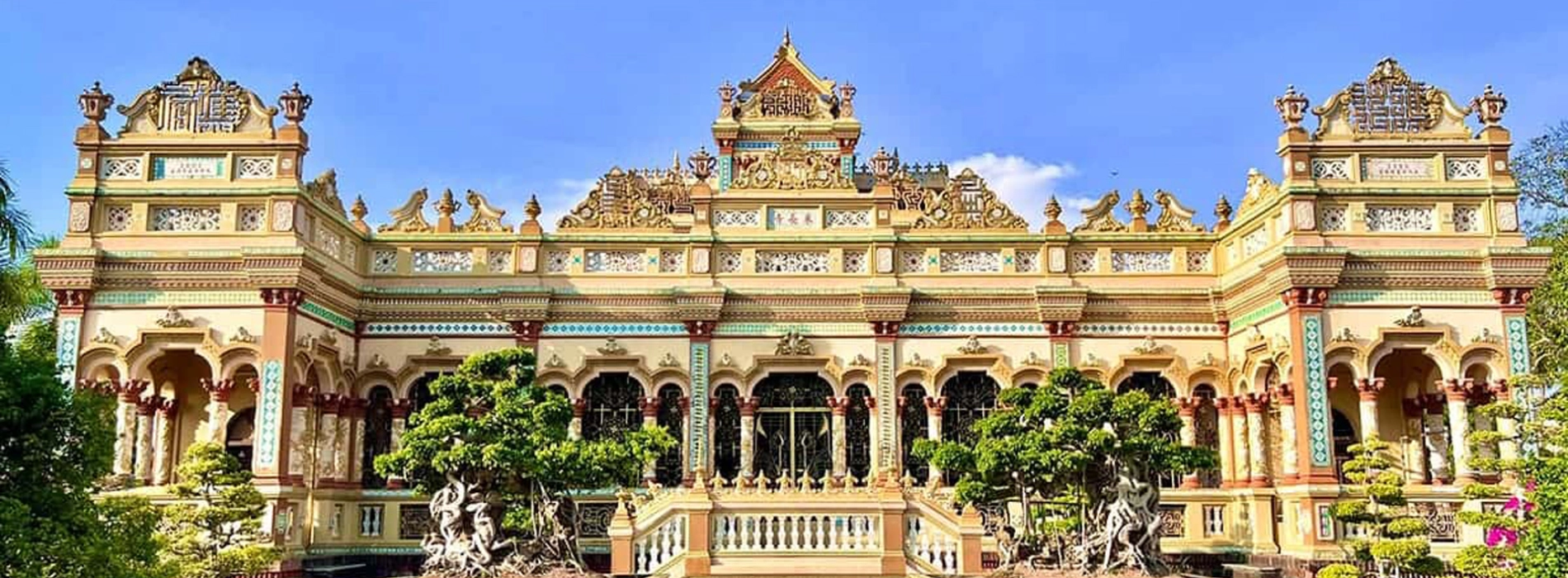Tien Giang

Known as the largest rice granary in Vietnam, Mekong Delta is blessed with a warm climate all year round and fertile land. For a long time, this land has been visited by tourists from all over. Tien Giang Province possesses a peaceful, rustic and vibrant beauty. The winding rivers, closely-fruited gardens, ancient houses and friendly smiles of the locals are the attractions of this beautiful land.
When you come to Tien Giang, remember to visit the beautiful Tan Thanh Beach. Source: Traveloka
Traveling to Tien Giang is a journey to explore beautiful nature, as well as an opportunity to experience unique cultural features such as floating tours, peaceful islands and cool green gardens. If you want to explore the cultural beauty and scenery of this destination fully, let Asia King Travel give you some interesting information so you can have a wonderful trip.
In the 17th century, Tien Giang was reclaimed and settled by Vietnamese people - most of whom were from the Ngu Quang Region (provinces from Quang Binh to Quang Ngai today). In 1772, Lord Nguyen Phuc Thuan decided to establish an administrative unit in My Tho, Truong Don Town.
In 1780, Nguyen Phuc Anh ascended the throne and changed the name of Truong Don Town to Tran Dinh. In 1833, King Minh Mang changed the "town" unit to the "province" unit and Tran Dinh was renamed Dinh Tuong Province.
Linh Thuu Pagoda is one of the oldest pagodas in Tien Giang Province. Source: Traveloka
During the French colonial period, Dinh Tuong Province was renamed My Tho Province. Until 1976, Vietnamese Government decided to merge My Tho Province, Go Cong Province and My Tho City to form a new province called Tien Giang Province.
Read more: Mekong Delta Tour 2 days: Cultural exploration of the Mekong Delta
During the dry season, the weather is generally quite hot and dry. This is a good time to visit Tien Giang as you will avoid the rain and have the opportunity to enjoy outdoor activities such as visiting tourist attractions and participating in riverside activities.
The rainy season in the province usually lasts from May to October. During this period, it rains frequently and especially in August and September. The temperature is still quite warm but rain may affect outdoor travel activities.
Tien Giang Province is 120 kilometers from the North bank of Tien River, from Dong Thap Muoi to the East Sea. It is in the Southwestern region of Vietnam, 70 kilometers from Ho Chi Minh City to the southwest. Tien Giang is literally meaning “Tien River” and is one of the rich lands of Vietnam.
Tien Giang is named after Tien River. Source: Traveloka
If you depart from Ho Chi Minh City, here are 2 routes that Asia King Travel would like to suggest to you:
My Thuan Bridge at sunset. Source: Traveloka
However, if you travel along Route 1, you will be closer to My Tho City, while route 2 will take you to Go Cong District, quite far from the central area.
My Tho Rice Noodle Soup is a famous and delicious specialty of Tien Giang. The noodles are made from rice, when boiled in boiling water, they have a moderate dryness and toughness, not mushy or soft.
A bowl of noodles usually has bones, minced meat, pork offal or seafood, covered with broth... Vegetables to eat with such as chives, lettuce, bean sprouts are placed on top, sprinkled with a little fried onions and pepper to make the dish more flavorful.
My Tho Rice Noodle Soup creates a special impression with its delicious and attractive flavor. Source: bazantravel
The soul of this dish lies in the broth. The broth is simmered from pork bones, a little dried squid, creating sweetness. All blend as an indispensable part of this famous noodle dish. Nowadays, My Tho noodles have been modified with dishes such as squid, bone, beef ball, vegetarian, satay noodles...
Giong Market is the old name of Vinh Binh Town Market - Go Cong Tay District. Giong Market Va Cake has a strong flavor of Mekong Delta region. This cake is delicious because the rice flour is fatty, the shrimp, bean sprouts are sweet, and the peanuts have a nice aroma.
Besides the traditional Va Cake, the locals here also make many types of vegetarian cake with fillings made from peanuts, straw mushrooms, and wood ear mushrooms... You can eat banh va with fish sauce or soy sauce. Vegetarians can still enjoy this delicious Va Cake.
Go Cong Va Cake makes many people fascinated. Source: MIA.vn
The profession of making this cake appeared at the same time as the process of land reclamation and settlement of Vietnamese people in this region, in the 17th century and became a typical dish of this land.
Traveling to Tien Giang offers a unique blend of discovering natural beauty, learning cultural heritage and enjoying culinary delights. From serene landscapes and busy floating markets to vibrant festivals and warm-hearted locals, this place has something to offer every traveler. So, what are you waiting for? Contact Asia King Travel to plan an Vietnam adventure-filled journey.
Read more: Southern Vietnam Tour 10 days: Highlights Exploration
Let's embark on a Cai Be Trip 2 days: Explore the Heart of the Mekong Delta, whe...
Explore the Mekong Delta's heart on Cai Be Tour Full-day: A rustic Mekong Delta...